20 Legendary Male Tennis Players Who Redefined the Game
Throughout history, a select few male tennis players have risen to legendary status, redefining the sport with their incredible talent, competitive spirit, and transcendent star power. From the graceful artistry of Roger Federer to the relentless intensity of Rafael Nadal, these all-time greats have set new standards of excellence on the court while captivating fans worldwide with their larger-than-life personas off it. This article will highlight four of the most iconic, influential, and record-shattering men’s tennis legends who took the game to new heights. We’ll look at what made these champions so unique and unforgettable, from their playing styles and career achievements to the indelible marks they left on tennis. Whether with their shot-making brilliance, heart-stopping rivalries, or sheer dominance of the sport for over a decade, these transformative superstars are rightfully considered among the greatest male players to ever pick up a racket. They raised the bar for future generations and carved their names into the pantheon of tennis immortals.
These are the twenty men who redefined tennis as a sport:
1. Rod Laver
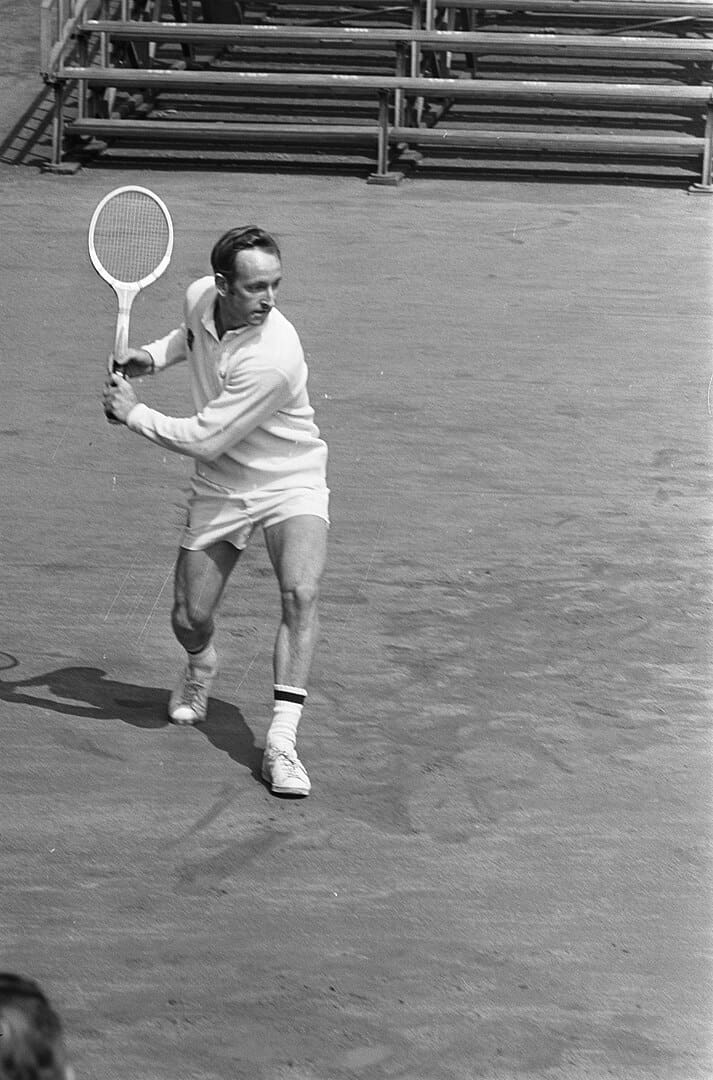
Joost Evers / Anefo, CC0, via Wikimedia Commons
With his all-court serve-and-volley game, here is a man who set new standards for aggressive, athletic play in the 1960s and early 1970s, his name is Rod Laver. He perfected versatile shot-making from any position on the court and pioneered topspin lobs and half-volley pickups. By winning two calendar-year Grand Slams in 1962 and 1969, Laver demonstrated a level of sustained excellence and dominance never seen before or since. His innovative, attacking style showed future generations the possibilities of aggressive baseline, net, and transition play combined. Overall, Laver redefined what it meant to be a complete, all-surface player at the highest level.
2. Bjorn Borg
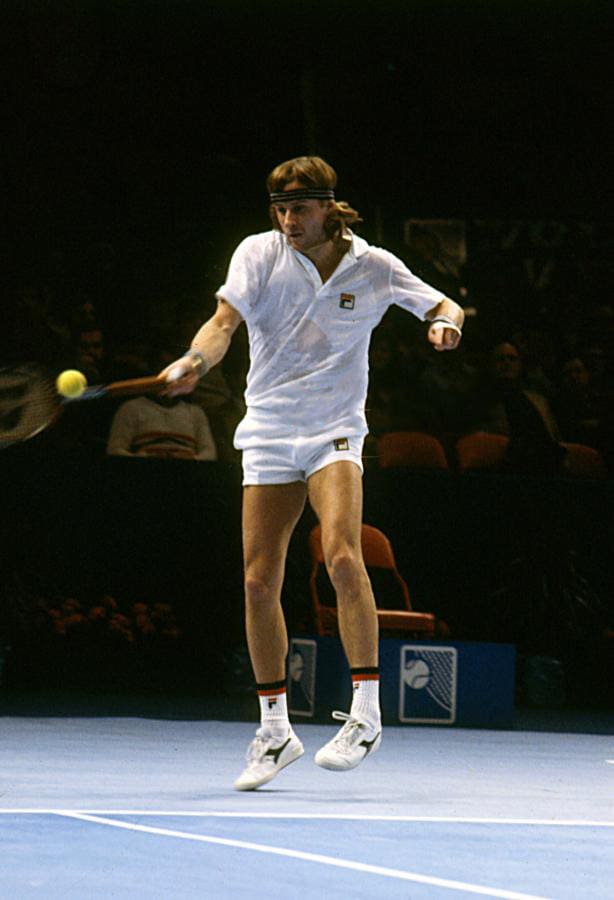
Norberto Mosteirin, Public domain, via Wikimedia Commons
Bjorn Borg was a man like no other whose supreme stamina, stone-faced intensity, and heavy topspin groundstrokes brought a new level of power and consistency from the baseline to men’s tennis during his time. His fitness and mechanical ground game allowed him to outlast and outhit opponents of all styles and ages. By winning eleven Grand Slam titles, including five straight Wimbledon’s, Borg showed the possibilities of controlling matches through physicality and baseline mastery rather than serve-and-volley play. Borg showed the world his special skills in tennis including his icy resolve and looping topspin shots. He paved the way for future baseliners and evolved tennis into more of a grueling, defensive sport.
3. Ivan Lendl

Carine06, CC BY-SA 2.0, via Wikimedia Commons
When we talk about tennis in the 1980s, one name comes to people’s minds, Ivan Lendl. Lendl ruled the game for a decade with his ruthless efficiency and relentless baseline game, winning eight majors and spending more than five years as the world’s best tennis player. The Czech-American pioneered grueling off-court fitness regimens and weight training previously unseen in the sport’s top players. On the court, Lendl wore down opponents with his heavy topspin forehand, fitness, and mental toughness. His work ethic and conditioning allowed him to excel on all surfaces. Lendl ushered in a new physicality and professionalism to men’s tennis, paving the way for future power baseliners while evolving the sport into more of a punishing physical battle from the baseline.
4. Pete Sampras

Craig ONeal, CC BY-SA 2.0, via Wikimedia Commons
Every decade has a legendary tennis player and the 1990s had one man who will be remembered for as long as tennis sport exists, his name is Pete Sampras. He was a trend maker, and record breaker who won a record fourteen Grand Slam singles titles, including a record seven Wimbledon titles. Sampras spent a record two hundred and eighty weeks ranked as the number one tennis player during his reign in the sport. His fluid serve motion and attacking net skills were nearly unparalleled. He made Wimbledon’s grass his kingdom. Sampras pioneered a faster, more aggressive style defined by risk-taking and athleticism. While not known for his personality, his winning spirit and serve-and-volley mastery made him one of the most decorated champions in tennis history.
5. Andre Agassi
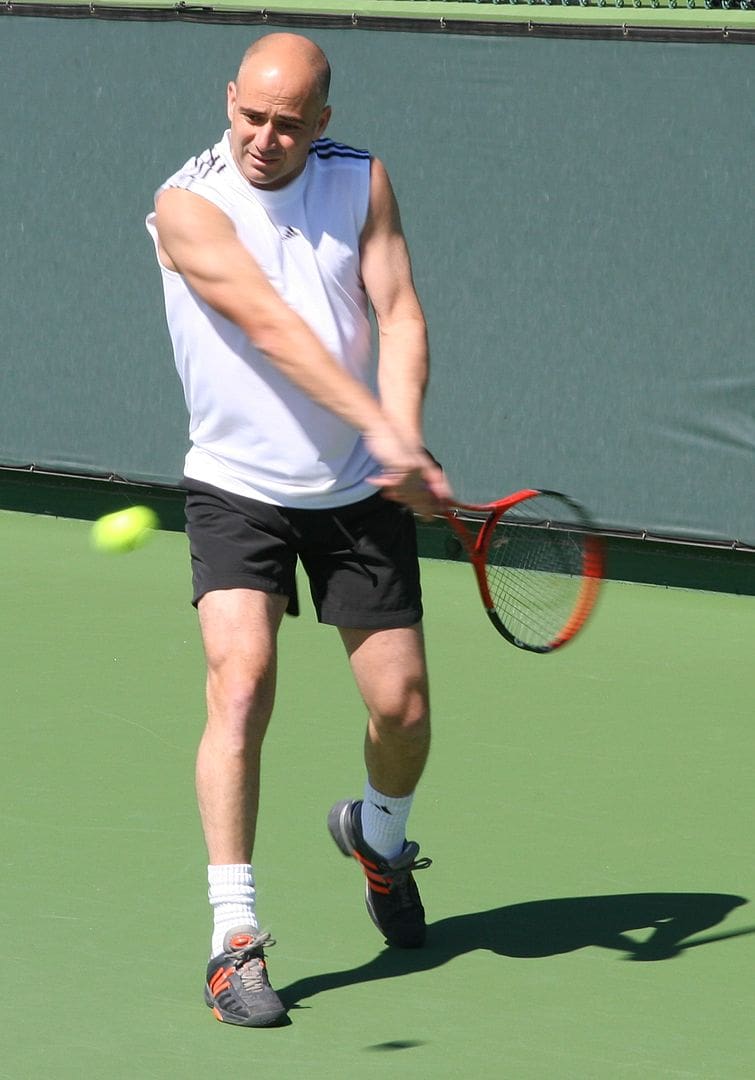
me (w:User:Akademan), CC BY-SA 2.5, via Wikimedia Commons
Andre Agassi must have been the classiest man to have graced the tennis court during his time from the 1980s to the early 2000s. Some of his achievements? He won eight Grand Slam titles from the late 1980s through early 2000s with his aggressive baseline game built around super returns and groundstrokes. Agassi helped make tennis cool and accessible with his flashy persona. He pioneered radical fashion statements in a conservative sport. While troubled early on, Agassi evolved into a consummate player. He completed a career Grand Slam and showed remarkable longevity. As an elder statesman, Agassi promoted the sport and became a role model. Agassi made tennis entertaining, and popular and changed its image.
6. Roger Federer

Mike McCune from Portland, CC BY 2.0, via Wikimedia Commons
Here is a man who has made the tennis court his home in the twenty-first century when the game is so competitive. Roger Federer has won a record twenty career Grand Slam singles titles and dazzled fans worldwide. He mastered aggressive baseline play, net attacks, and transition shots, all with graceful footwork and smooth strokes. Federer showed the possibilities of offensive, attacking tennis when executed properly. He pioneered specially designed racquets and equipment innovations too. While remaining remarkably healthy, Federer showed incredible consistency across three decades. He has elevated tennis to an art form and made the sport wildly popular across the globe. With his versatility and unprecedented success across surfaces, Federer has made men’s tennis a more creative, athletic, and complete game.
7. Novak Djokovic

Carine06 from UK, CC BY-SA 2.0, via Wikimedia Commons
In a world where competition is at its peak, men need to be at their best to beat the best and Novak Djokovic has proved just that. With his unrelenting consistency, flexibility, and precision from all areas of the court, Novak Djokovic has won twenty-one Grand Slam titles so far and held the world number ranking for a record three hundred and seventy weeks and counting. He has dominated the Australian Open with nine titles. Djokovic has shown unmatched physical resilience and defensive skills, contorting his body to return even the most hopeless shots. His two-handed backhand is a textbook lesson in offense-to-defense transitions. Djokovic has made power and athleticism necessary components for success in today’s game. His commitment to diet, training, and recovery has extended his career. He has set new benchmarks in men’s fitness, mental toughness, and all-around excellence.
8. Roy Emerson

Eric Koch for Anefo, CC0, via Wikimedia Commons
Roy Emerson dominated men’s tennis before the Open Era, winning twelve Grand Slam singles titles in the 1960s, including six Australian Championships. He benefited from weaker amateur fields but pioneered rigorous physical training and athleticism alongside his all-court technical skills. Emerson’s fitness and serve-volley ability allowed him to exploit the limitations of that era. He set benchmarks for tireless effort and hustle. Emerson’s amateur success in Grand Slams and Davis Cup catalyzed the move to open tennis, accelerating professionalization in the sport. His energetic, attacking style and multi-surface versatility presaged complete, all-around players like the modern-day Federer and Djokovic. Though less known today, Emerson’s excellence hastened progress in men’s tennis.
9. Pancho Gonzalez

Los Angeles Daily News, CC BY 4.0, via Wikimedia Commons
Pancho Gonzalez’s stature and height proved advantageous to him in the game. Standing at six feet and three inches, Gonzalez dominated professional tennis in the 1950s and early 1960s before the Open Era. He spent eight years as the world number one, reigning with his competitive fire and aggressive power. Gonzalez was one of the original icons who paved the way for professional tours and Open tennis, fighting for player rights and prize money. His excellence showed tennis could become a viable profession. Gonzalez proved tennis champions could emerge from humble beginnings and minority backgrounds. While a controversial figure, he advanced the sport’s professionalization and commercial viability. Gonzalez’s legacy as a dominant tour pro expanded tennis’s future as a global spectacle.
10. John McEnroe
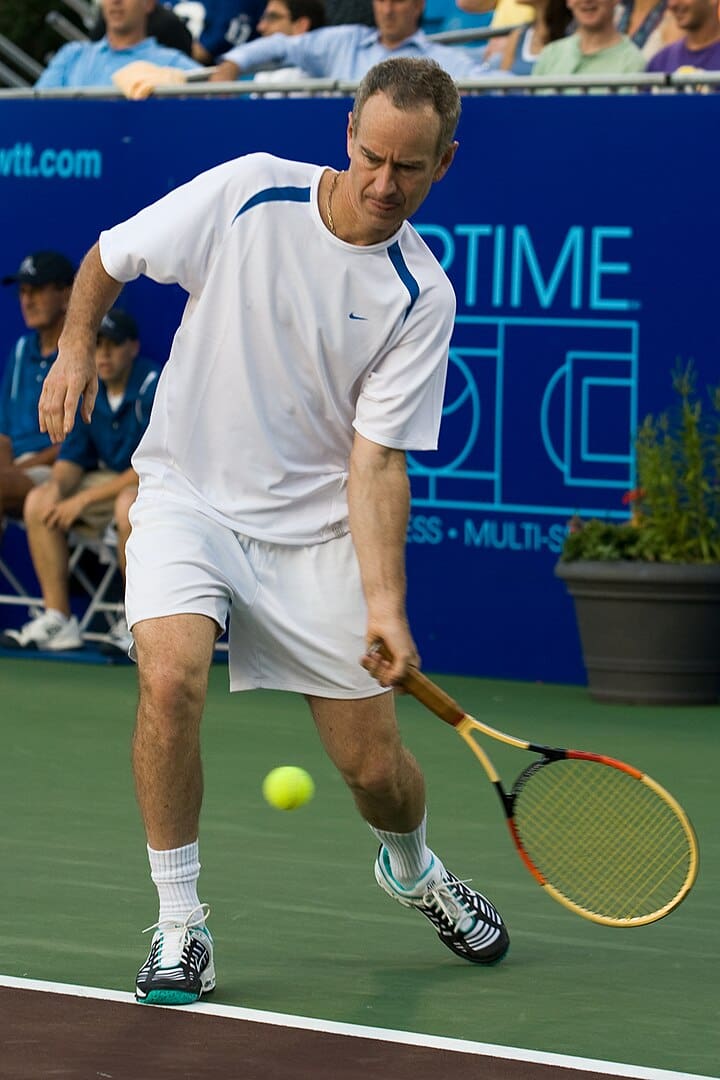
Nrbelex, CC BY-SA 2.5, via Wikimedia Commons
With his fiery temperament, artful shot-making, and aggressive serve-and-volley game, John McEnroe became tennis’s preeminent star in the 1980s, winning seven major titles. His dramatic outbursts and rivalries with Borg, Connors, and Lendl enthralled fans, making him one of the sport’s most iconic figures. McEnroe also pushed net play and touch shots to new levels of mastery. His fast hands, deft volleys, crisp overheads, and nimble footwork around the net set new standards. By bringing emotion, shot-making creativity, and athletic flair to the court, McEnroe made tennis intense, captivating entertainment and left an indelible mark on the sport.
11. Don Budge

See page for author, Public domain, via Wikimedia Commons
Don Budge was the first player to win all four Grand Slam titles in a single year with his 1938 calendar Grand Slam. Budge changed the game by introducing a classic serve-and-volley style which paved the way for future net rushers. Budge helped popularize the backhand groundstroke, proving it could be just as powerful as the forehand. He also created the white shorts, shirt, and pants tennis outfit at a time when clothing was formal. Budge’s Grand Slam feat stood alone for over twenty years until Laver dethroned him. His all-court attacking game and versatility across surfaces set the model for excelling in all majors. Budge proved tennis greatness required mastery of technique, tactics, and athleticism. His unprecedented Grand Slam still stands as a seminal achievement in the sport.
12. Ken Rosewall

Pasarell, CC BY-SA 4.0, via Wikimedia Commons
One interesting fact about tennis is that it is a sport for people from all walks of life including size. Unlike the towering Pancho Gonzalez, Ken Rosewall was the shortest man on the court who became one of the greatest tennis players of the 1950s and 1960s. Though unable to compete in Grand Slams during his prime due to his professional status, Rosewall won eight major titles and reached the Wimbledon final at age thirty-nine. His superb backhand and impeccable returns were unprecedented for their time. Rosewall introduced more topspin on groundstrokes to generate control and consistency. His masterful use of slice, placement, and Changes to tennis strategy were ahead of their time and influential. With finesse and efficiency, Rosewall proved that technique could overcome size deficiencies. His success paved the way for other undersized players to thrive through skill, fitness, and determination.
13. Mats Wilander

robbiesaurus, CC BY-SA 2.0, via Wikimedia Commons
The man who had unmatched court coverage during his time was Mats Wilander. He won seven Grand Slam singles titles in the 1980s with his cerebral, and consistent baseline game. Rather than overpowering opponents, Wilander outmaneuvered them tactically, constructing points and devising strategies to exploit weaknesses. His two-handed backhand stood out for its versatility and defense-to-offense transitions. Wilander showed the possibilities of lifting heavy shots and redirecting pace. His fitness and mental tenacity were second to none in his era. Wilander elevated tennis match strategy to new levels. He proved that outthinking, not just outhitting, opponents could produce championships. Wilander expanded notions of what it took to prevail in tennis.
14. Boris Becker

Flickr-User mandj98, CC BY 2.0, via Wikimedia Commons
Boris Becker burst onto the scene as a seventeen-year-old unseeded player to win Wimbledon in 1985, ushering in a new era of power tennis. With his massive serve and fearless net rushing, Becker added athleticism and aggression to the sport in the 1980s and 90s. He pioneered the modern, dominant style of men’s grass court tennis at Wimbledon, winning there three times. Becker was also one of the first true global superstars of the sport, accelerating its worldwide popularity. His rivalry with Lendl advanced athleticism in the game. Though injuries derailed him, Becker’s infectious charisma and forceful play made tennis more accessible, attractive, and physical for future stars like Sampras.
15. Stefan Edberg

flickr user Michael ErhardssonSir James at [1], CC BY-SA 3.0, via Wikimedia Commons
16. Guillermo Vilas
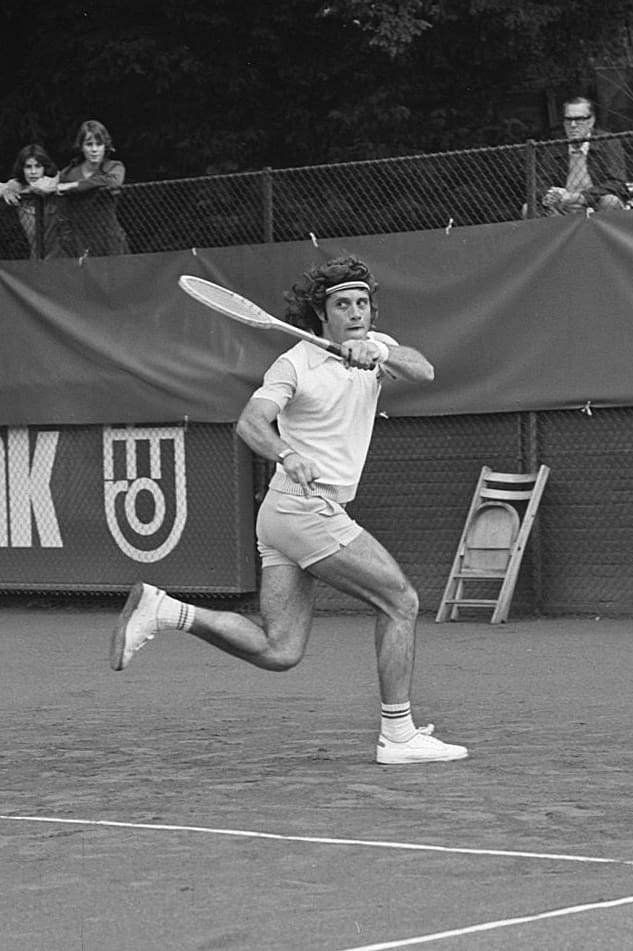
W. Punt for Anefo, CC BY-SA 3.0 NL, via Wikimedia Commons
Guillermo Vilas, an Argentine tennis legend, left an indelible mark on the sport by redefining clay court play. Known for his unique two-handed backhand and exceptional fitness, Vilas dominated the clay courts in the 1970s, amassing numerous titles. His aggressive baseline game and tireless work ethic transformed the perception of clay court tennis, emphasizing the importance of physical fitness and shot consistency. Vilas’s success on this surface influenced future generations, and his playing style contributed to the evolution of modern tennis. His legacy endures as a testament to the power of adaptability and relentless determination in the game.
17. Arthur Ashe
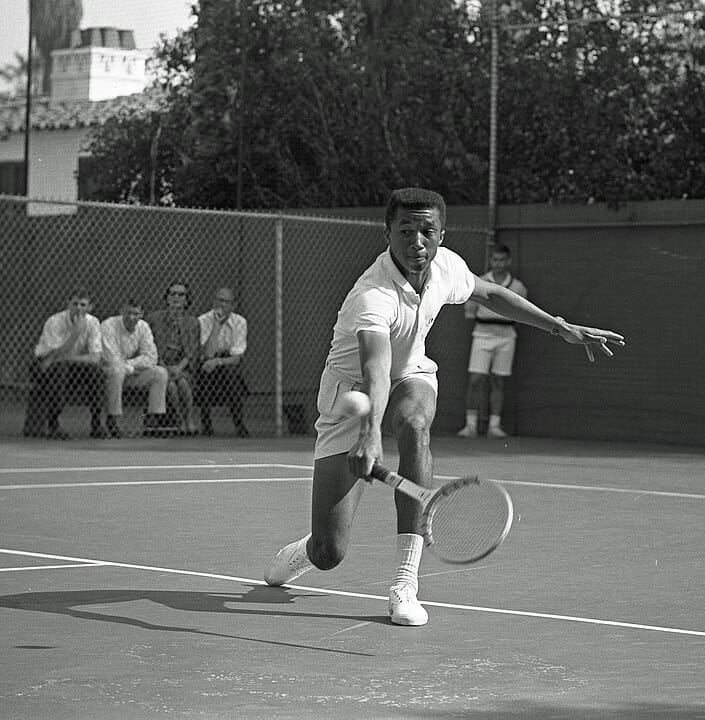
Art Rogers, Los Angeles Times, CC BY 4.0, via Wikimedia Commons
Here is a trailblazing figure in tennis who left a lasting impact on and off the court, the African American Arthur Ashe. He became the first African American male to win a Grand Slam singles title, claiming victory at the 1968 US Open. His sportsmanship, composure, and grace under pressure set an example for all tennis players. Off the court, Ashe was a prominent civil rights activist and an advocate for social change. He used his platform to address issues of racial inequality and injustice, making him a symbol of conscience in the tennis world. His legacy extends far beyond his tennis achievements, as he inspired a new generation of athletes to use their influence for positive social change. Arthur Ashe’s contributions to tennis and society continue to resonate, making him a transformative and enduring figure in the sport’s history.
18. Jack Kramer

Europeana, CC0, via Wikimedia Commons
A champion player himself in the 1940s and 50s, Jack Kramer had an even greater impact promoting professional tennis behind the scenes. He competed using classic serve-and-volley skills before the Open Era and was ranked world number one for years. However, Kramer’s bigger legacy was organizing the pro tour that laid the groundwork for Open tennis. He recruited top amateurs like Gonzalez and nurtured pro tennis despite opposition. Kramer promoted tennis globally with exhibitions and competitions. He advocated for Open tennis and player rights. Without Kramer’s tireless efforts, tennis would not have achieved the popularity, professionalism, and commercial success it has today. He paved the way for the sport’s growth.
19. Jimmy Connors

momovieman, CC BY 2.0, via Wikimedia Commons
Jimmy Connors won 8 Grand Slam singles titles from 1974-1983 thanks to his fierce competitiveness, precise returns, and flat groundstrokes. His relentless baseline counterpunching style and fiery intensity inspired future generations of players. Connors made the two-handed backhand popular, proving it could generate as much pace and control as a one-hander. His epic matches against rivals like McEnroe, Borg, and Lendl drew huge public interest that boosted tennis’s popularity. Connors demonstrated exceptional longevity, playing well even when he was over forty years old. He paved the way for aggressive baseliners and showed the possibilities of maximizing talent through boundless competitiveness and preparation. Overall, Connors changed tennis through his unwavering spirit and perfection of a punishing baseline game.
20. Rafael Nadal
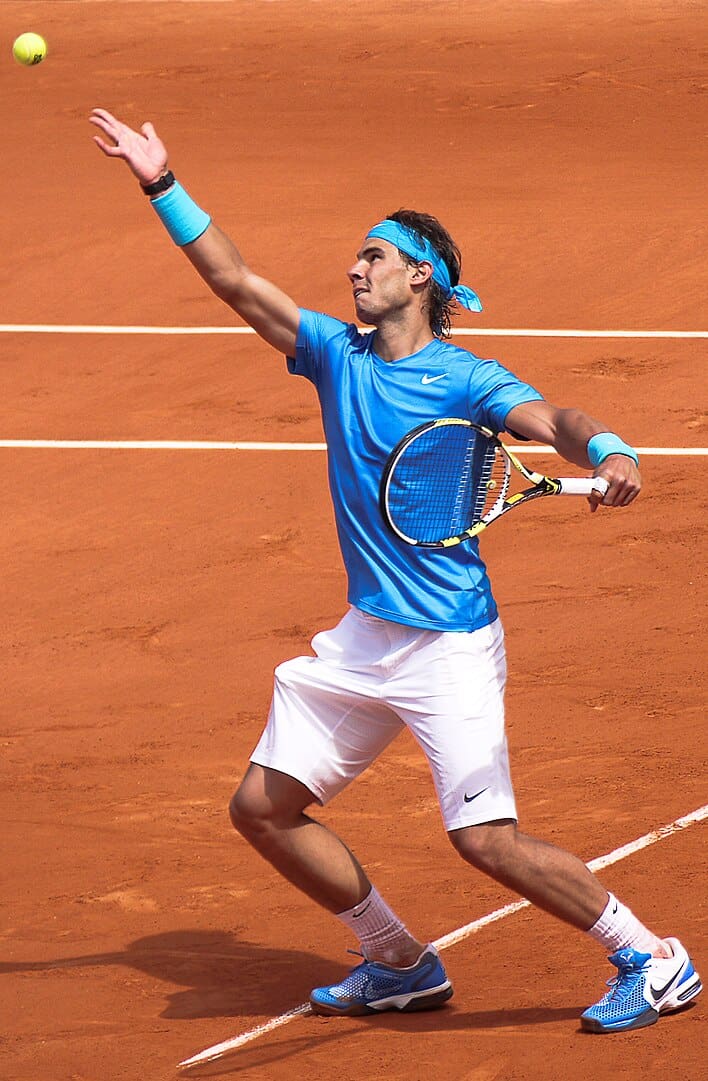
[1], CC BY-SA 2.0, via Wikimedia Commons
The legendary male tennis players we’ve explored didn’t just win tournaments and break records – they reinvented and elevated the sport to new heights. Their diverse playing styles, larger-than-life charisma, and unrelenting competitive spirit made them transcendent superstars who captivated the world. While their career accomplishments certainly cemented their greatness, their impact went far beyond trophies and statistics. They forced rivals and future stars to raise their games, inspired generations of tennis players and etched their indelible mark on tennis history. The sport will forever bear the fingerprints of their greatness. As long as tennis is played, these icons and trailblazers will be the benchmark and standard that all others are measured against. Their unparalleled dominance, flair, rivalry, and longevity built on the foundations of the game and made tennis the global, beloved sport it is today. They are legends whose legacies will continue to be celebrated and emulated for as long as rackets are picked up and tennis balls fly over the net.
Planning a trip to Paris ? Get ready !
These are Amazon’s best-selling travel products that you may need for coming to Paris.
Bookstore
- The best travel book : Rick Steves – Paris 2023 – Learn more here
- Fodor’s Paris 2024 – Learn more here
Travel Gear
- Venture Pal Lightweight Backpack – Learn more here
- Samsonite Winfield 2 28″ Luggage – Learn more here
- Swig Savvy’s Stainless Steel Insulated Water Bottle – Learn more here
Check Amazon’s best-seller list for the most popular travel accessories. We sometimes read this list just to find out what new travel products people are buying.








